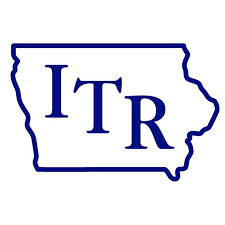Jobs Outlook Preview
Oct. 19 panel will discuss hiring, retention challenges employers will face in 2024

Michael Crumb Oct 10, 2023 | 10:06 am
3 min read time
817 wordsAll Latest News, Business Record Insider, HR and LeadershipEmployers will face a variety of challenges in the hiring and retention of talent in 2024, according to some of the panelists participating in the Business Record’s Jobs Outlook panel on Oct. 19.
Panelists scheduled to participate in the virtual conversation include David Leto, president of Palmer Group; Jenae Sikkink, senior vice president of talent development at the Greater Des Moines Partnership; Almardi Abdalla, vice president of family and workforce programs, Oakridge Neighborhood; Kathy Anderson, division administrator, business engagement at Iowa Workforce Development; and Peter Orazem, professor of economics at Iowa State University.
During the Jobs Outlook, scheduled from noon to 1 p.m., we will look at how ongoing labor shortages are affecting hiring strategies, how return-to-office policies may affect hiring and job retention, and how continued fears of recession may affect growth and hiring plans in 2024.
Ahead of the conversation, the Business Record reached out to the panelists and asked them about the top jobs-related challenges employers would face in 2024. Here are some of their responses.

Leto: Defining culture
The past few years have brought about a lot of change in a short amount of time, leaving many organizations struggling to define their identity and determine the type of culture they want to establish. One of the biggest challenges that organizations will face next year is defining their cultural values to their current team and communicating that message to potential candidates during the hiring process. It is important that organizations seek out individuals who share similar values, purpose and culture. Hiring people who are aligned with your organization’s culture and who are committed to enhancing it will be instrumental in ensuring the organization’s long-term success.

Sikkink: Communicating benefits
Effectively communicating your organization’s benefits will be a top challenge and opportunity in 2024. Flexibility matters to job seekers and, along with professional development opportunities, plays a vital role in the employee value proposition. The 2023 Workforce Trends and Occupancy Study showed that employees value flexibility and also see the value of working in the office to collaborate with teammates and have opportunities for formal and informal mentoring. The data also indicated that Greater Des Moines workers were more satisfied than the prior year and more satisfied than others across the country, showing that our employers have a solid base to build on. Employers can view the results of the study on the Partnership’s website.

Orazem: Labor force participation
Nationally, labor force participation has decreased for men and has increased slightly for women. But the drop in labor force has been concentrated among workers over 55 years of age, while labor supply increased for younger men and women. The problem is worse in Iowa because we went into the pandemic with an older than average workforce, and so Iowa lost a greater share of its labor force than other states. Since 2000, 38% of the population growth in Iowa was from immigration, which was shut down during the pandemic. It has started to recover, but not enough to replace the lost Iowa workers. Absent an increase in immigration, Iowa firms will be at a disadvantage compared to competitors in other states in attracting and retaining workers.

Abdalla: Meeting demand
It’s the employee’s market. In today’s job market, talented and skillful job candidates have the upper in picking the job of their choice. Personnel recruitment and retention has been and will be one of the most difficult challenges for employers in the upcoming years. The suspension of H1B visas in 2020, the high cost of living which has contributed to the high cost of hiring new candidates are some of the factors behind the U.S. job shortage. Companies will have a harder time striking a balance between remaining competitive and lowering overheads while being mindful of employees’ morale. For example, an employer may down-size their workforce to reduce operating costs, but such a move leads an increased workload, long working hours, burnout and would have an adverse impact on employees’ productivity and morale. It will also have an impact on companies’ competitiveness. With that being, employers are not operating at the same level. Some companies came out of the COVID-19 era strong and have been able to invest in new technologies to cut costs and continue their growth. Technology is the key, but it requires capital and large investments in training and acquiring a new generation of talented workforce. AI, robotics, software development, e-commerce, cyber security, animation, and health services are some of the industries that will continue to grow in the upcoming years. All these fields require a highly skilled workforce. With the current shrinkage in the pool of talented workers, more employers will continue to compete for fewer job candidates. The Baby-boomers will continue to exit the job market, making it even harder for midsized companies to compete.
You can register for the Jobs Outlook here.

Michael Crumb
Michael Crumb is a senior staff writer at Business Record. He covers real estate and development and transportation.










